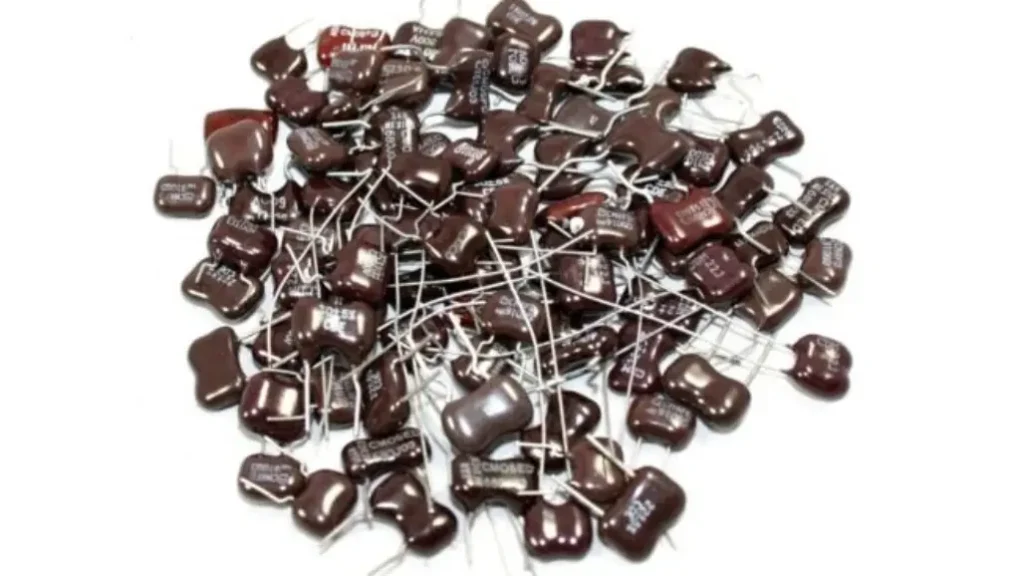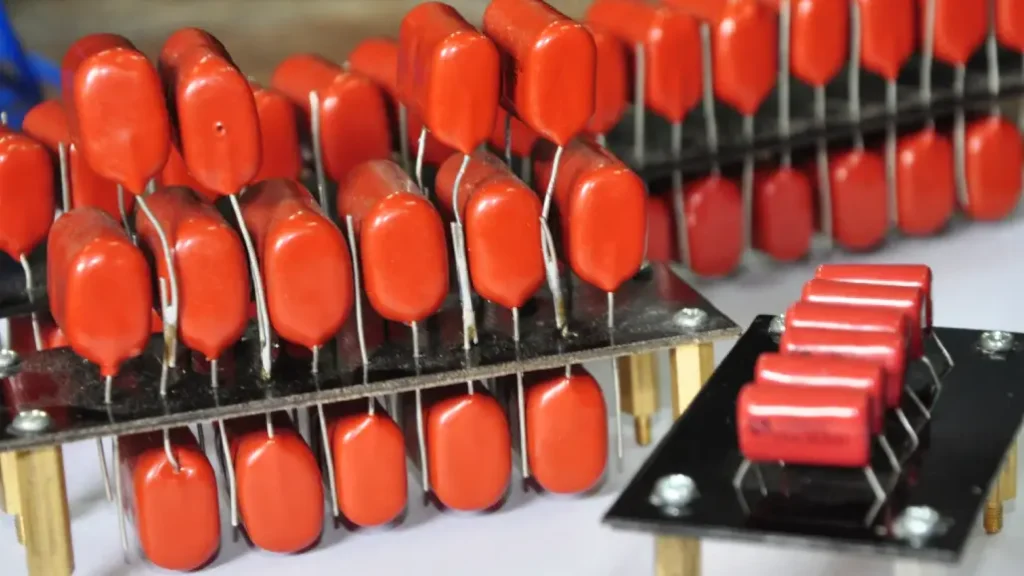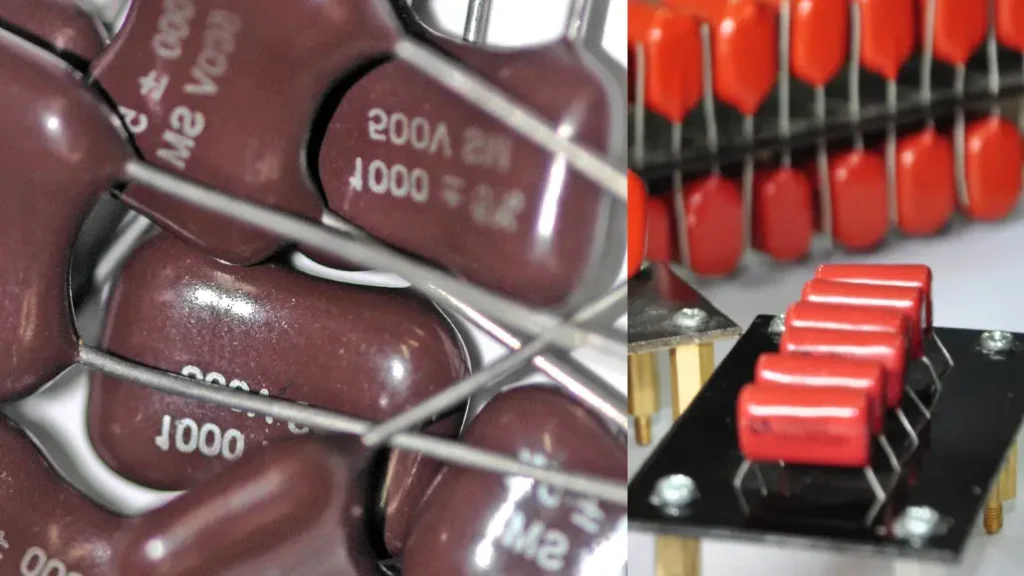Capacitors are essential components in electronic circuits, and choosing the right type is crucial for optimal performance. Silver mica and ceramic capacitors are two common options, each with distinct characteristics. This blog delves into their fundamental differences, exploring their construction, electrical properties, and ideal applications.
Understanding the nuances between silver mica and ceramic capacitors is vital for engineers and hobbyists alike. We’ll examine their strengths and weaknesses, helping you determine which capacitor best suits your specific circuit requirements. From high-frequency stability to temperature sensitivity, we’ll cover the key factors that differentiate these components.
What Are Silver Mica Capacitors

Silver mica capacitors are high-precision capacitors known for their exceptional stability and low losses. They are constructed by alternating layers of mica sheets and silver electrodes, which are then clamped together and encapsulated. This construction method results in a capacitor with a very stable capacitance value that changes minimally with temperature and frequency.
These capacitors are highly regarded for their tight tolerances, high Q factor, and ability to operate at high frequencies. They find applications in circuits where precision and stability are paramount, such as in radio frequency (RF) circuits, oscillators, and filters. Their durability and reliable performance make them a preferred choice in demanding electronic applications.
What Are Ceramic Capacitors

Ceramic capacitors are a widely used type of capacitor that employs ceramic materials as the dielectric. They are manufactured by layering ceramic materials with metal electrodes and then firing the structure at high temperatures. This process results in capacitors with varying dielectric constants, allowing for a broad range of capacitance values and applications.
These ceramic capacitors are known for their versatility, cost-effectiveness, and availability in numerous sizes and formats. They are commonly used in general-purpose electronic circuits, power supplies, and decoupling applications. Ceramic capacitors are categorized into two main classes: Class 1 capacitors, which offer high stability and low losses, and Class 2 capacitors, which provide higher capacitance values but with less stability. Their adaptability makes them a fundamental component in modern electronics.
Silver Mica vs Ceramic Capacitor

When comparing silver mica and ceramic capacitors, it’s essential to delve into their construction, characteristics, and applications. Here’s a more detailed exploration:
Silver Mica Capacitors:
Construction and Characteristics:
- Silver mica capacitors are built with alternating layers of mica, a natural mineral, and silver electrodes. This layered structure is then encapsulated to protect it from environmental factors.
- Mica’s inherent properties contribute to the capacitor’s exceptional stability, low temperature coefficient, and high Q factor (low losses).
- They are known for their tight tolerances, meaning their actual capacitance values are very close to their rated values.
- These capacitors exhibit excellent performance at high frequencies, making them suitable for radio frequency (RF) applications.
- They are known to be very stable over long periods of time.
Applications:
- RF circuits: Due to their high frequency performance and stability.
- Oscillators: Where frequency stability is critical.
- Filters: In applications requiring precise filtering.
- High-voltage applications: Because of mica’s high dielectric strength.
- Precision timing circuits.
Ceramic Capacitors:
Construction and Characteristics:
- Ceramic capacitors use ceramic materials as the dielectric, with metal electrodes layered within.
- The properties of ceramic capacitors vary significantly depending on the specific ceramic material used.
- They are categorized into Class 1 and Class 2 capacitors:
- Class 1: Offer high stability and low losses, similar to silver mica capacitors, and are often used in temperature-compensating applications.
- Class 2: Provide higher capacitance values but with less stability, and are commonly used for general-purpose applications.
- Ceramic capacitors are available in various forms, including multilayer ceramic capacitors (MLCCs), which offer high capacitance in small packages.
- They are produced in very high volume, so they are generally very inexpensive.
- Applications:
- General-purpose electronic circuits: For coupling, decoupling, and bypassing.
- Power supplies: For filtering and smoothing.
- Decoupling capacitors: To reduce noise in digital circuits.
- Automotive electronics.
- Consumer electronics.
Comparative chart to show the differences between silver mica vs ceramic capacitors in the following:
| Feature | Silver Mica Capacitors | Ceramic Capacitors |
| Dielectric Material | Mica | Ceramic |
| Stability | Very high | Variable (Class 1: high, Class 2: moderate) |
| Tolerance | Tight | Variable |
| Frequency Performance | Excellent (high frequency) | Good (varies with type) |
| Q Factor (Losses) | High (low losses) | Variable |
| Capacitance Range | Relatively low | Wide range |
| Cost | Relatively high | Relatively low |
| Applications | RF circuits, oscillators, filters, high-voltage applications | General-purpose circuits, power supplies, decoupling |
| Temperature Coefficient | Very low and stable | variable. |
| Size | larger for higher values. | very small especially MLCC types. |
By understanding these differences, engineers and hobbyists can select the most appropriate capacitor for their specific applications.
How to Select Silver Mica and Ceramic Capacitors
Selecting the right capacitor, whether silver mica or ceramic, involves careful consideration of your circuit’s specific requirements. Here’s a guide to help you make informed decisions:
1. Determine Your Circuit’s Needs:
Frequency:
If your circuit operates at high frequencies (RF applications), silver mica capacitors or Class 1 ceramic capacitors (like C0G/NP0) are preferred due to their excellent high-frequency performance and stability.
Stability:
For applications requiring high capacitance stability over temperature and time, silver mica capacitors are the best choice. Class 1 ceramic capacitors also offer good stability.
Tolerance:
If your circuit demands precise capacitance values, silver mica capacitors, with their tight tolerances, are ideal.
Voltage:
Consider the voltage rating required for your application. Silver mica capacitors are often used in high-voltage applications.
Cost:
If cost is a primary concern, ceramic capacitors are generally more affordable, especially for general-purpose applications.
2. Understanding Capacitor Characteristics:
Silver Mica:
- Known for high stability, low losses (high Q factor), and excellent high-frequency performance.
- Suitable for precision applications where stability is critical.
Ceramic:
- Available in two main classes:
- Class 1 (C0G/NP0): High stability, low losses, suitable for temperature-compensating applications.
- Class 2 (X7R, Z5U): Higher capacitance values, but less stability, suitable for general-purpose applications.
- Consider the temperature coefficient and voltage coefficient of ceramic capacitors, as these can significantly affect their performance.
3. Practical Considerations:
Size and Mounting:
- Consider the physical size and mounting style of the capacitors. Surface mount (SMD) or through-hole options are available.
Environmental Factors:
If your circuit will operate in harsh environments, consider capacitors with appropriate environmental ratings.
Application Specifics:
For audio applications, be aware that some ceramic capacitors can introduce distortion. In these situations, Silver mica, or high quality class 1 ceramic capacitors are prefered.
For decoupling applications, ceramic capacitors are generally sufficient.
For RF tuning, silver mica or high Q ceramic capacitors are needed.
By carefully evaluating these factors, you can select the most appropriate silver mica or ceramic capacitors for your specific electronic projects.
Conclusion
In summary, silver mica capacitors shine in high-frequency, precision applications, offering exceptional stability and low loss. Ceramic capacitors, with their broader range and cost-effectiveness, are versatile for general-purpose circuits. Choosing between them hinges on your specific needs: stability versus cost.
Therefore, for projects demanding high precision, silver mica is preferred. For general electronic needs, ceramic capacitors often suffice. Consider frequency, voltage, and stability requirements for optimal selection.
Need reliable wholesale capacitors? Weishi Electronics offers a wide range of high-quality silver mica and ceramic capacitors at competitive prices. Explore our inventory today and contact us for your bulk capacitor needs.